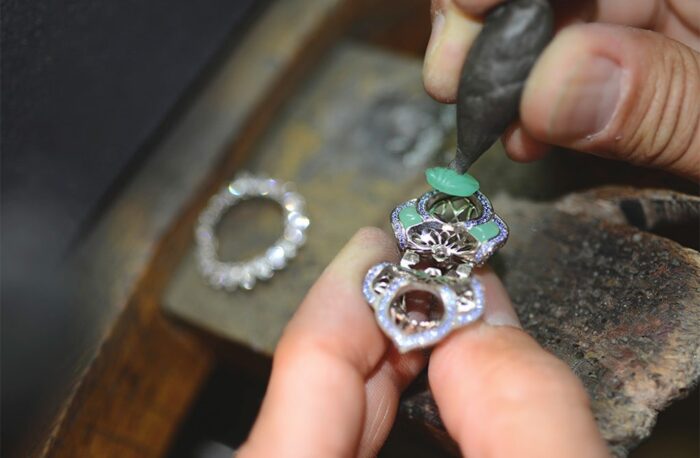
How Colored Gemstones Are Graded
If you’re looking for the next amazing piece of jewellery for yourself or a loved one, you may very well have considered a coloured gemstone. With so many varieties available, there’s also a good chance that you may be overwhelmed with choices, particularly with prices varying to such an incredible degree. To help those looking for the perfect gem, we’ve created a simple guide to coloured gemstones to give you a better idea of what to look for. In this guide we examine the Four Cs of gemstones, in addition to analysing what makes up the colour profiles of these beautiful stones.
 Coloured gemstones and the Four Cs
Coloured gemstones and the Four Cs
One of the first things you should learn about coloured gemstones is their unique grading system, one that the best jewellers Melbourne will invariably use. This system is referred to the “Four Cs” of gem grading, with the respective C’s standing for colour, clarity, cut, and carat (the weight of the gem). The final price of the gem will depend on these factors, with high quality, rare gems fetching much higher prices than gems deemed as being of less quality. Despite more affordable gems being referred to as inferior in relation to high-quality gems, that shouldn’t factor into your buying decision. Instead, choose something that you personally find appealing is going to get you the best bang for buck – your preferred gem may even end up being thousands of dollars less than something considered high-grade. For example, larger stones are generally considered as being higher grade than smaller ones, but a chunky gem may not suit someone who is smaller than average — the Four Cs aren’t designed to reflect beauty, only rarity.
How gemstone colours are interpreted
Gemstone colour is related to three unique properties: hue, tone, and saturation. Hue refers to what most people term as colour – things like red, green or blue. Tone refers to the intensity of a gem’s shade, or its lightness or darkness. Finally, the saturation is how intense the hue of the gem is. For example, pink can be considered a desaturated red hue. In terms of value, gemstones fetch the largest prices when they are intensely coloured with pure hues. This system means that even if a high-value gem looks stunning to the layman, an off-coloured gem, such as a ruby with an orange tinge, will be worth much less than a pure red ruby. Clarity of the gem is also highly valued, which is judged through anything that may interfere with the free passage of light, such as minerals flecks, hollow areas, and fractures, and how these are related to the visual and structural impact of the stone.
Choosing the right gemstone for your circumstances
With so many available jewellery options to consider when looking for a gemstone, the process can be as overwhelming as it is rewarding. At the end of the day, if you’re simply wanting a beautiful stone, any decisions related to the gem you purchase should be related to how you personally feel about the gem. If you’re a collector or enthusiast, on the other hand, using gem grading as a measure for a stone is an excellent way to find a highly specific gem for your collection – for this reason, gemstone rating can be a highly important endeavour.








This is really interesting. I had no idea so thanks for sharing!